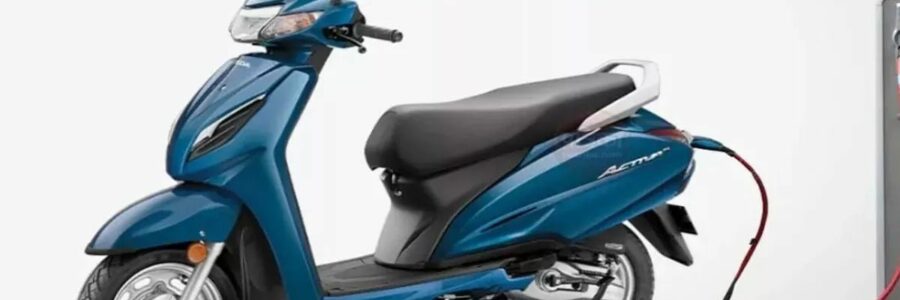
Honda’s EV roadmap: Dedicated factory, first two e-scooter models in a year
Honda Motorcycle and Scooter India (HMSI), India’s second-largest two-wheeler maker, on Wednesday revealed its electric vehicle (EV) roadmap, which includes setting up a dedicated EV factory, launching the first two EVs in 2023-24, and establishing 6,000 battery exchange points in the country.
HMSI plans to establish a specialised unit for the manufacturing of electric vehicles (EVs), named ‘Factory E’, at its Narsapura plant located in Karnataka.
Factory E will be created by converting an existing production line that currently manufactures internal combustion engine (ICE) vehicles, said Atsushi Ogata, HMSI managing director and chief executive officer.
“The ICE vehicle production line at the Narsapura plant will be shifted to a new unit at Gujarat’s Vithalapur plant,” he added.
Factory E will initially produce 600,000 units per annum, starting operations in March next year.
The EV production capacity will be increased gradually in phases, aiming to produce 1 million units by 2030, Ogata said.
Overall, the company’s manufacturing capacity of 5.2 million units per annum at its four plants in India shall increase to 6.2 million units by 2030.
Ola Electric, Hero Electric, Okinawa, and Ampere — which are relatively new companies — are the top four players in the Indian electric two-wheeler market, with more than 60 per cent market share as of 2022.
Established two-wheeler makers Bajaj Auto, Hero MotoCorp, and TVS Motors have already launched their electric scooters in India.
Ogata said HMSI will launch two electric scooters in 2023-24.
The first scooter will be a mid-range fixed-battery vehicle, while the second will be a swappable-battery-run vehicle.
“Both EVs will be launched around March next year, around the time of the commencement of production at Factory E,” he mentioned.
The first EV will be based on the Activa platform, but its name will be different, he said.
The first EV has been designed and developed by the research and development (R&D) team in India, but the second model has been conceptualised in Japan, he added.
He said the success of the second EV, which runs on swappable batteries, will depend on the kind of investment made in establishing battery swapping stations in India.
“In the beginning, there would be challenges,” he mentioned.
Apart from EVs, the company will also launch a 160 cc engine motorcycle, 350 cc engine motorcycle, and 125 cc engine scooter by Diwali this year, he noted.
HMSI currently runs just 23 battery swapping stations in Bengaluru.
Once Bengaluru is saturated with such battery exchange points, the company will start establishing stations in other cities of southern India.
Then, it will set them up across the entire country.
“We want about 6,000 battery exchange points across the country,” Ogata noted.
He said the level of localisation in EVs would be lower than that of ICE vehicles as certain high-technology components have to be imported.
Ogata said the company would significantly expand its exports from India.
Currently, it ships 18 models to 38 countries.
In FY24, it would export 20 models to 58 countries.
About 4 per cent of the 15.3 million two-wheelers sold in India in 2022 were electric two-wheelers, according to VAHAN data.
In 2022, the electric two-wheeler segment grew by 305 per cent in volume terms.
Asked if the rising sales of electric two-wheelers impacting the sales of Activa, HMSI’s most popular brand that runs using ICE, Ogata said: “We do not feel the impact of electric two-wheeler sales on Activa.
“There was some downsizing due to Covid-19, but the demand is back now.
“We have a sizable order book for Activa right now.”
According to SIAM’s data, HMSI’s domestic sales jumped from 3.15 million in the April-February period in FY22 to 3.82 million in FY23.
“The company has seen a growth of 21 per cent during this time period when two-wheeler sales in India have grown by 16 per cent.
“We expect our sales to see similar growth in FY24.
“Growth will be in lower double digits,” said Yogesh Mathur, operating head, sales and marketing, HMSI.
The road map
- HMSI currently runs 23 battery-swapping stations in Bengaluru
- Plans to establish a specialised unit called ‘Factory E’ for manufacturing electric vehicles in Karnataka
- Factory E will initially produce 600,000 units per year, starting operations in March next year
- The first e-scooter will be a mid-range fixed-battery vehicle, while the second will be swappable-battery-run
Source: Read Full Article